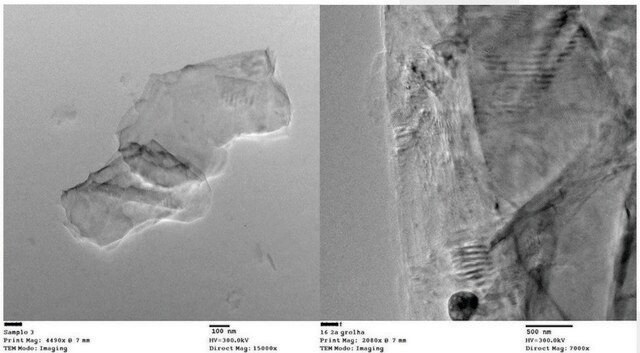All Photos(1)
About This Item
Empirical Formula (Hill Notation):
C
CAS Number:
Molecular Weight:
12.01
EC Number:
MDL number:
UNSPSC Code:
12352300
PubChem Substance ID:
NACRES:
NA.23
Recommended Products
form
flakes
Quality Level
particle size
+100 mesh (≥75% min)
mp
3652-3697 °C (lit.)
SMILES string
[C]
InChI
1S/C
InChI key
OKTJSMMVPCPJKN-UHFFFAOYSA-N
Looking for similar products? Visit Product Comparison Guide
Storage Class Code
11 - Combustible Solids
WGK
nwg
Flash Point(F)
Not applicable
Flash Point(C)
Not applicable
Personal Protective Equipment
dust mask type N95 (US), Eyeshields, Gloves
Choose from one of the most recent versions:
Already Own This Product?
Find documentation for the products that you have recently purchased in the Document Library.
Customers Also Viewed
Zheling Li et al.
ACS nano, 14(9), 10976-10985 (2020-07-01)
Liquid- phase exfoliation (LPE) is the principal method of producing two-dimensional (2D) materials such as graphene in large quantities with a good balance between quality and cost and is now widely adopted by both the academic and industrial sectors. The
Hussam Fallatah et al.
Environmental science and pollution research international, 26(24), 25057-25070 (2019-06-30)
Graphene oxide (GO) has been reported to possess antibacterial activity; therefore, its accumulation in the environment could affect microbial communities such as biofilms. The susceptibility of biofilms to antimicrobials is known to depend on the stage of biofilm maturity. The
Raghvendra Singh Yadav et al.
Nanomaterials (Basel, Switzerland), 9(4) (2019-04-19)
Herein, we presented electromagnetic interference shielding characteristics of NiFe2O4 nanoparticles-in-situ thermally-reduced graphene oxide (RGO)-polypropylene nanocomposites with the variation of reduced graphene oxide content. The structural, morphological, magnetic, and electromagnetic parameters and mechanical characteristics of fabricated nanocomposites were investigated and studied
Tian Carey et al.
Nature communications, 8(1), 1202-1202 (2017-11-02)
Fully printed wearable electronics based on two-dimensional (2D) material heterojunction structures also known as heterostructures, such as field-effect transistors, require robust and reproducible printed multi-layer stacks consisting of active channel, dielectric and conductive contact layers. Solution processing of graphite and other
Haocong Dong et al.
Materials (Basel, Switzerland), 12(14) (2019-08-03)
High-throughput production of highly efficient photocatalysts for hydrogen evolution remains a considerable challenge for materials scientists. Here, we produced extremely uniform high-quality graphene and molybdenum disulfide (MoS2) nanoplatelets through the electrochemical-assisted liquid-phase exfoliation, out of which we subsequently fabricated MoS2/graphene
Our team of scientists has experience in all areas of research including Life Science, Material Science, Chemical Synthesis, Chromatography, Analytical and many others.
Contact Technical Service





